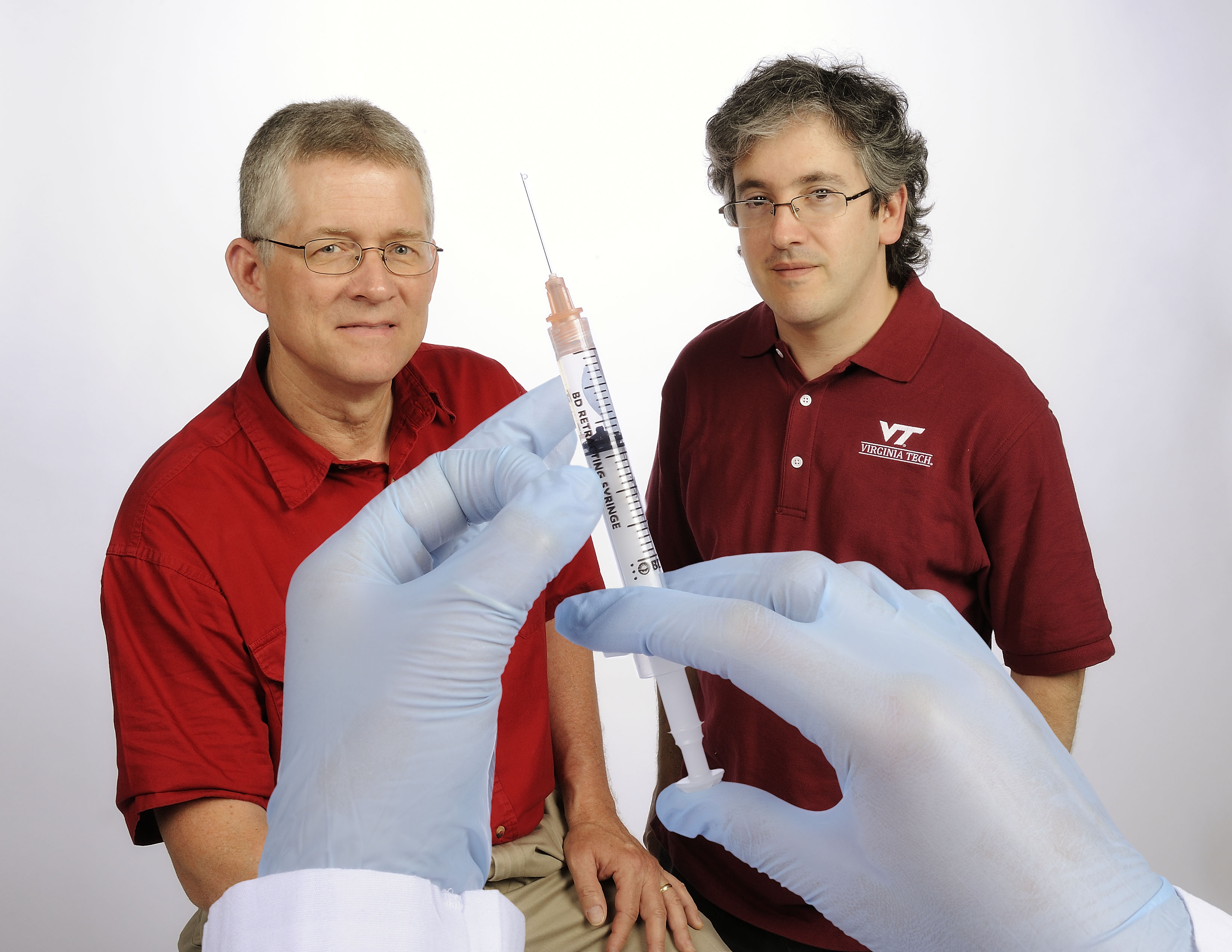Business IT researchers optimize scheduling of shots for travel

Foreign travel requires a hodge-podge of vaccinations, depending on destination, to protect the traveler from illness. Scheduling the vaccinations tends to be either complicated or costly for clinics.
"With multiple vials of different vaccines open and deteriorating rapidly and numerous patients each potentially requiring a different assortment of vaccines, determining the optimal scheduling of patients is not a trivial task," said Alan S. Abrahams, assistant professor of business information technology in the Pamplin College of Business at Virginia Tech.
Abrahams and Cliff T. Ragsdale, professor of business information technology at Pamplin, have devised a scheduling system to accommodate travelers and clinics. Their research paper will be published in a forthcoming issue of Decision Support Systems.
Traditional patient scheduling in travel vaccine clinics is usually first-in, first-out, which can lead to significant waste of doses from multi-dose vials. It can also result in significant wait times and patient shuffling, as Ragsdale experienced when he took his son to a local health department to get vaccinated for a mission trip to South Africa. Ragsdale — author of the textbook, Spreadsheet Modeling and Decision Analysis: A Practical Introduction to Management Science — says he thought patient scheduling would be a “great optimization project, given its peculiarities,” so he and Abrahams examined alternative ways to schedule patients who require multiple vaccines.
"Since single-doses are typically 10-30 percent more expensive per dose than the comparable multi-dose formulation, the multi-dose vials are preferred, if patients can be scheduled in such a way that all the doses can be used before the vials expire," said Ragsdale.
The researchers generated simulated data for the operation of a clinic that processes 30 patients each day. They assumed 15 minutes per patient, which is consistent with findings in the medical literature as well as the actual scheduling practice at the county health clinic that prompted the study. "Further, we assumed that vaccinations were performed by a single healthcare practitioner working a 9-hour shift with two 15-minute breaks and an hour for lunch," said Abrahams.
The typical scheduling practice used at travel clinics involves patients calling several days or weeks ahead of time to make an appointment for service on a particular day at a particular time.
"We think that a better approach to clinic scheduling would be for patients to call several days or weeks ahead of time and select a day and a planning time window during that day when they could be at the clinic to receive inoculations," said Ragsdale. "Each day, the clinic could then look at the next day’s workload and determine a schedule that orders patients in a way that makes the best use of multi-dose formulations of vaccines and minimizes costs. Patients could be notified of the time within their planning time window that has been assigned and even asked to arrive 15 to 20 minutes before their assigned time to complete paperwork and create a safety buffer for the schedule."
While such an approach might be somewhat less convenient for the patient, Abrahams said, this type of scheduling system is commonly used with surgical patients. “Furthermore, if a patient knows well ahead of time that their appointment will be between, say, 8 and 10 a.m., then the inconvenience of being notified of the exact time within that interval the day before is fairly minimal," he added.
Ragsdale said the system provides savings of 4-7 percent, depending on patient-scheduling flexibility. "The potential impact of the accumulated savings is quite significant, especially when the savings are applied to a number of clinics and vaccinations over an extended time."
The model also offers some convenience benefits to the patient. "Under existing first in-first out scheduling procedures, patients frequently endure long waits as an open vial of an expensive vaccine leads nurses to urgently vaccinate other waiting patients requiring the open vaccine, to the detriment of scheduled patients,” Abrahams said. “Under our proposed system, patients can be informed in advance of appropriate arrival times that should help reduce wait times.”
The proposed model does require some work and expense to implement. A decision support system for travel vaccine patient scheduling would need to be created and integrated with the existing patient scheduling system. But, the researchers concluded in their paper, “when implemented in a practical decision support tool, the demonstrated method presents a useful new operations management mechanism that could allow health care managers to significantly lower vaccine administration costs.”
Written by Susan Trulove.




